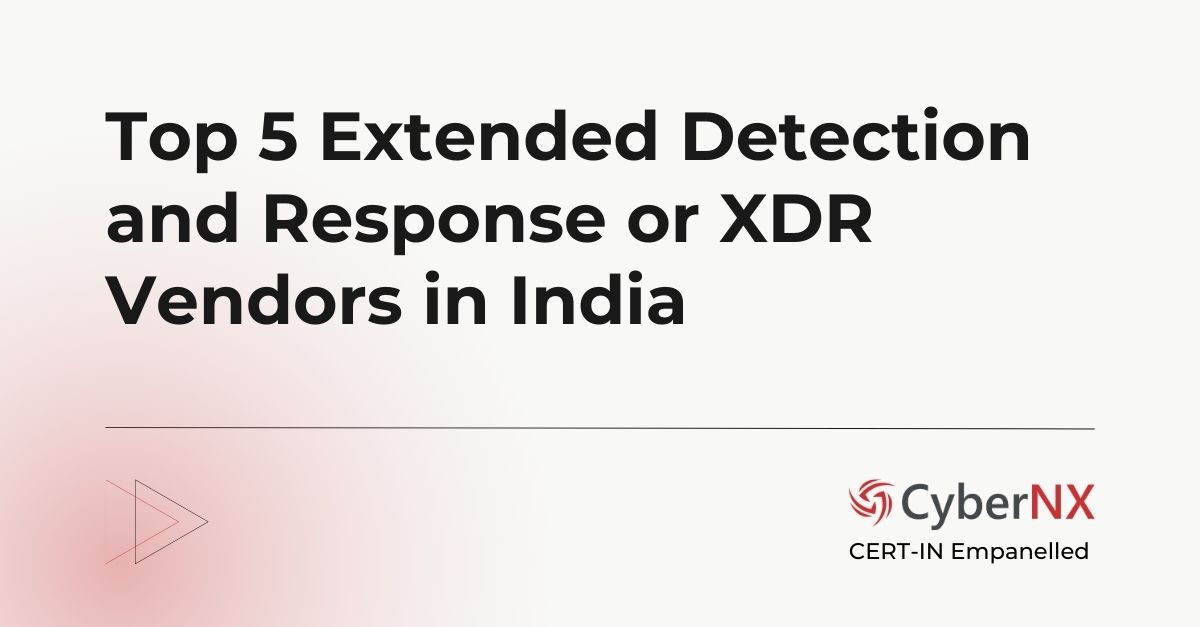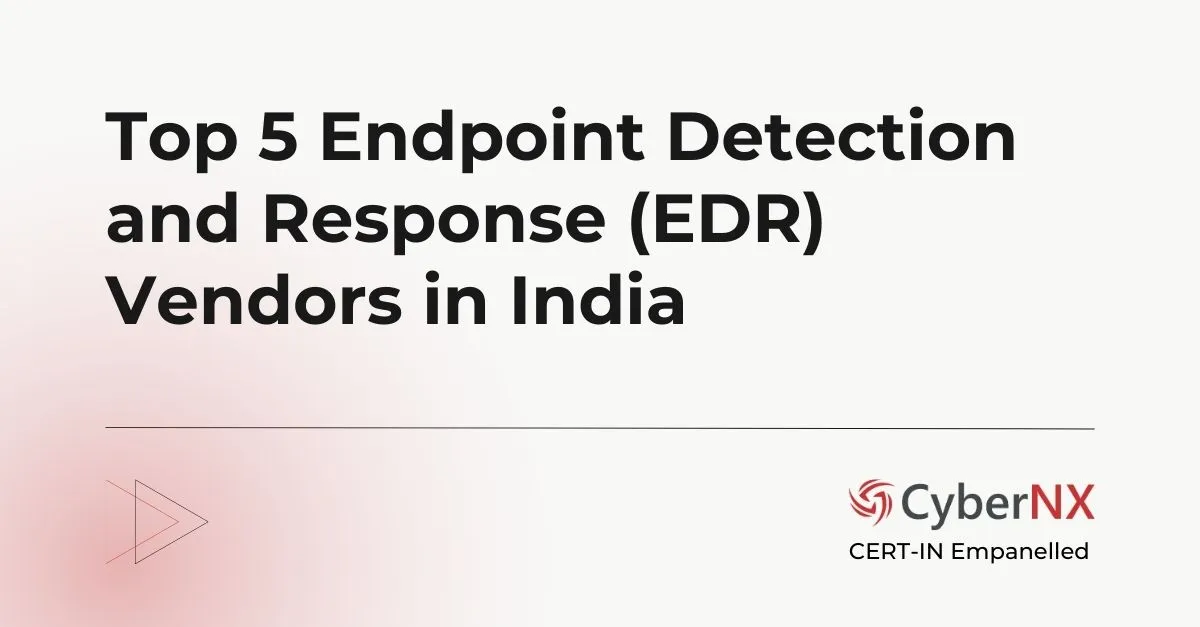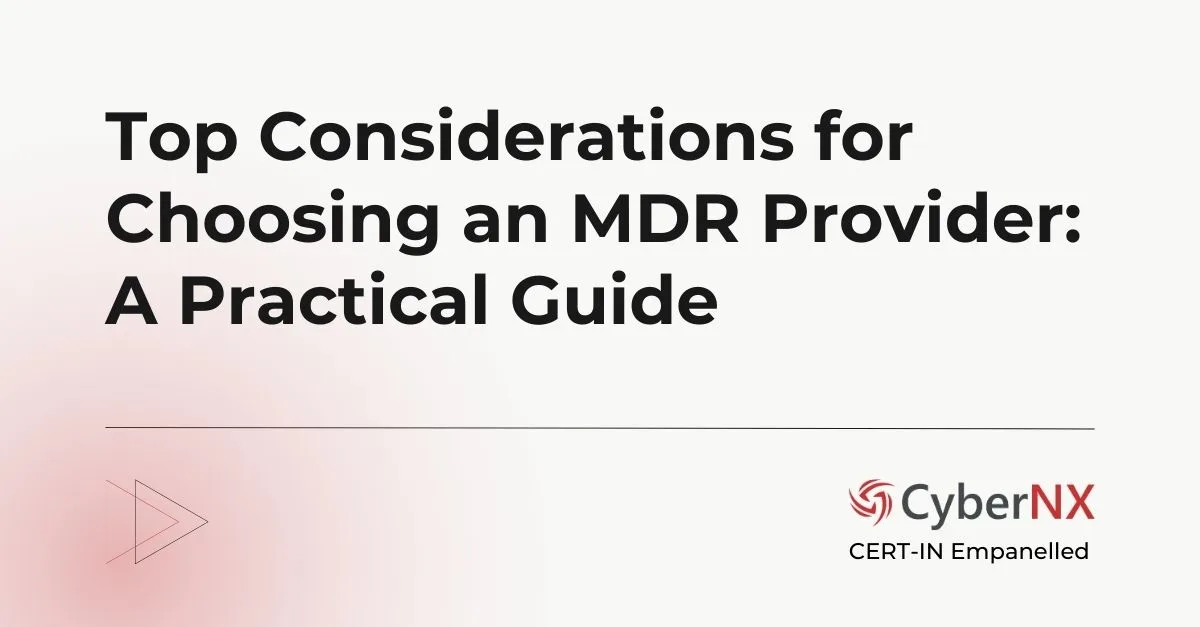Cybersecurity sometimes can feel like a game of chess, where security professionals react to cyber attackers making different moves. This is the reason why breaches unfold in minutes, while detection still takes days and sometimes weeks.
But that should not be the case with your business. Threat monitoring, detection and response at the root is an effective, pro-active strategy to neutralize the threats before they can cause damage.
Propelling this strategy to the front are XDR, MDR and EDR, the three acronyms that represent threat detection and response solutions. They have become prominent solutions in modern defence.
Each represents a unique strategy in detecting, investigating and responding to cyber threats. In this blog, we unpack what these tools are, how they differ and which one suits your business needs.
What is EDR?
Endpoint Detection and Response (EDR) can be understood as a watchman at the gates of your digital fortress. Installed directly on endpoints such as laptops, desktops, devices and servers, EDR tools collect and analyse activity data to uncover malicious behaviour.
As a next step in the process, EDR investigates by capturing telemetry and recording events. Post which, it alerts security teams to the events and replays incidents like digital forensics.
Despite all the positives, EDR has limits. First, it is narrow in scope, confined to endpoint devices and heavily reliant on in-house teams to act on its alerts. However, in skilled hands, EDR is formidable. But in understaffed security environments, EDR could seem like an unwanted noise.
Key Strengths:
- Deep visibility into endpoint behaviour
- Powerful forensic capabilities
- Real-time detection of malware, ransomware and fileless attacks
Limitations:
- Requires a dedicated security team
- Limited to endpoint telemetry
- Alert fatigue is common without automation
Find everything you need to know about EDR technology in our comprehensive blog: EDR Guide
What is XDR?
XDR stands for Extended Detection and Response. It covers the complete security stack of an organisation and is the grand conductor of security data. It pulls together telemetry from endpoints, networks and cloud workloads to identities, emails and more.
Additionally, XDR enhances visibility by a large margin and unifies the response.
XDR correlates signals across multiple data sources and systems to uncover complex attack patterns that traditional tools miss. By eliminating silos, it reduces the noise and reveals gaps that may be missed if looked at in isolation.
Key Strengths:
- Holistic visibility across the digital ecosystem
- Automated correlation and detection across sources
- Reduced investigation time through unified dashboards
Limitations:
- Vendor lock-in can limit flexibility
- Requires skilled tuning for effective detection
- XDR still needs human expertise
Want to take a deep dive into XDR technology? Read our blog: XDR Guide
What is MDR?
Managed Detection and Response (MDR) is different. Because it is not a tool but a service. A much-needed support for your team. You can probably think of MDR as a special unit of security force working 24X7X365 on your behalf.
MDR solutions include complete EDR capabilities plus human expertise.
What does it mean for your business? Your business gets alerts, powered by commercial threat intelligence, thus offering context, analysis and action. The MDR teams proactively hunt for threats, investigate anomalies and provide even hands-on response to incidents if required.
For organisations without full-scale security operations centre (SOC), MDR is a strategic lifeline.
Key Strengths:
- Expert-driven, human-led threat hunting and analysis
- 24/7 monitoring and incident response
- Faster mitigation, thanks to external support
Limitations:
- Often lacks visibility beyond endpoints unless bundled with additional services
- Response speed may vary based on SLAs
- Less control for organizations that prefer in-house decision-making
Want to know more about MDR and why it matters? Check out our guide on Managed Detection & Response (MDR): A Complete Guide for 2025 and Beyond.
Difference Between EDR, MDR and XDR
If you have gone through the EDR, MDR and XDR definitions, you know by now that these solutions are different. They have distinct responses too depending on the organisational needs and maturity levels. We shed more light on it below in this EDR vs MDR vs XDR comparison.
1. Scope of Visibility
- EDR is all about endpoints
- MDR brings in expert, human oversight, and typically relies on endpoint-centric tools
- XDR goes beyond the endpoint, weaving in telemetry from multiple vectors such as cloud, identity, network and more
2. Response Capabilities
- EDR enables response, kill processes and quarantine files. But the action is manual unless scripted
- MDR offers guided or hands-on incident response
- XDR focuses on automated response playbooks across systems, thus isolating users, disabling access and blocking malicious IPs
3. Operational Overhead
- EDR demands attention. You must build processes and handle alerts internally
- MDR offloads security tasks to a third-party, expert-led team
- XDR reduces manual work through smart correlation and noise reduction, but setup and tuning still require internal effort
EDR, MDR and XDR: Comparison Chart
Understanding the differences between EDR, XDR, and MDR can be confusing due to overlapping features and terminology. The chart below simplifies these concepts and explains MDR EDR XDR, making it easier for you to compare their capabilities, scope and ideal use cases at a glance.
| Feature | EDR (Endpoint Detection & Response) | MDR (Managed Detection & Response) | XDR (Extended Detection & Response) |
| Scope | Endpoint-only | Endpoint (often) + Expert Oversight | Endpoint, Network, Cloud, Identity, etc. |
| Management | In-house team | External SOC (outsourced expertise) | In-house or hybrid with automation |
| Detection Approach | Behavioural & signature-based on endpoint | Proactive threat hunting by MDR provider | Cross-domain correlation & ML/AI models |
| Response Capabilities | Manual or semi-automated | Provider-guided or hands-on response | Automated across multiple layers |
| Alert Handling | Requires in-house triage | Offloaded to provider | Automated correlation reduces noise |
| Operational Burden | High | Moderate (outsourced) | Low to Moderate (automation heavy) |
| Visibility | Limited to devices | Limited unless integrated broadly | Unified across all telemetry sources |
| Ideal For | Mature, well-resourced security teams | Mid-sized firms or lean IT teams | Enterprises needing cross-platform defence |
Which One Is Right for My Business? That Depends on the Risk Profile
Choosing between MDR, XDR and EDR is about alignment with your company security goals.
- If you have a skilled SOC, mature processes and want granular control, EDR gives you the tools.
- If you are short-staffed, under pressure and need expert support, MDR is your tactical option.
- If you are scaling fast, facing hybrid threats and need comprehensive, correlated insights, XDR offers clearer, bigger picture.
Budget also matters, and so does context. A sophisticated in-house team may find MDR redundant. A cloud-first enterprise may outgrow EDR’s siloed view. And a small team may be overwhelmed by the setup demands of XDR.
Real-World Scenarios and Use Cases
A fintech startup with zero security staff can opt for MDR, gaining instant coverage and 24/7 expertise. Meanwhile, a global e-commerce brand can deploy XDR to unify endpoint, cloud and identity signals. Additionally, a government agency with a strong SOC leverages EDR for granular control.
As you can see different needs demands different tools.
Maturity Model Mapping
Cybersecurity maturity, for every company, is a journey. Here’s the closest view of how organisations evolve their detection and response capabilities:
Level 1: Basic Antivirus: Legacy antivirus tools offer minimal insight. They react to known threats but leave organizations blind to stealthy, sophisticated attacks.
Level 2: Endpoint Detection and Response (EDR): You now have eyes on endpoints. Behavioural analytics, telemetry and visibility are in place. But the burden of detection and response still lies on your internal team.
Level 3: Managed Detection and Response (MDR): You outsource the SOC. Analysts, threat hunters and incident responders work around the clock, turning signal into action while freeing up your internal bandwidth.
Level 4: Extended Detection and Response (XDR): You unify detection across endpoints, network, cloud and identity. Correlation is smarter, response is faster, and operations are automated.
Conclusion
In a world where threats leap across devices, identities and infrastructure, choosing the right tool is not about which is most advanced, but which is that fits your unique chess game situation.
CyberNX can help you to do just that! How?
We are a leading cybersecurity service provider with experienced and certified experts, technology-enabled security systems and 24X7X365 coverage. Plus, we offer EDR services in case you need basic endpoint security and XDR services for advanced, sophisticated detection and response. Our MDR services with vast detection capabilities, seamless tool integrations and AI is apt for organizations looking for comprehensive security support.
Let’s connect to find what suits your unique requirements.
EDR vs XDR vs MDR FAQs
If I already have EDR, do I need MDR or XDR too?
Yes. If your EDR is generating alerts faster than your team can act on them, or if you lack visibility beyond endpoints. MDR adds expertise and 24×7 monitoring. XDR brings in other attack surfaces, cloud, email, network, allowing for smarter, more contextual defence. EDR is essential, but rarely enough on its own.
Can XDR completely replace a SIEM solution?
No. But it’s getting close. While SIEMs are log aggregators built for compliance and deep querying, XDR focuses on real-time detection, correlation, and response. For many organizations, XDR offers faster operational insight and response, but SIEM remains relevant for long-term log retention, audit trails and complex investigations.
How do I measure ROI on MDR or XDR?
Start with dwell time, incident response speed and attack containment metrics. For MDR, ROI is seen in fewer breaches, less downtime and reduced incident costs. For XDR, look at reduced alert fatigue, faster investigation cycles and threat detection across blind spots. The cost of an undetected breach almost always dwarfs the cost of proactive detection.
Which solution is best for regulatory compliance like HIPAA, GDPR, or ISO 27001?
All three can support compliance, but MDR is ideal for organizations that need a documented, continuously monitored security program. Providers often include detailed reports and response documentation useful for audits. XDR, if well-integrated, can also support audit trails and policy enforcement across domains.





